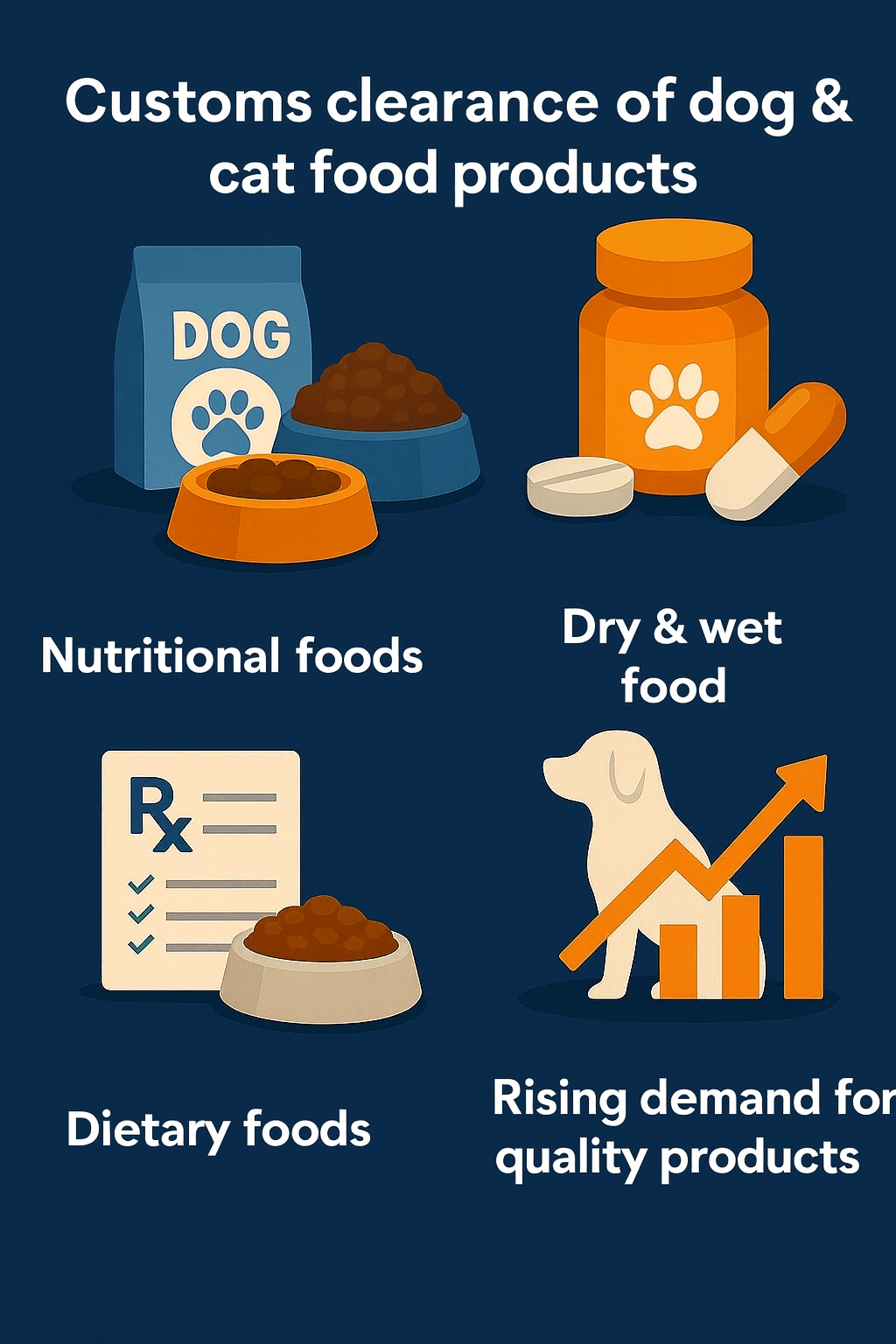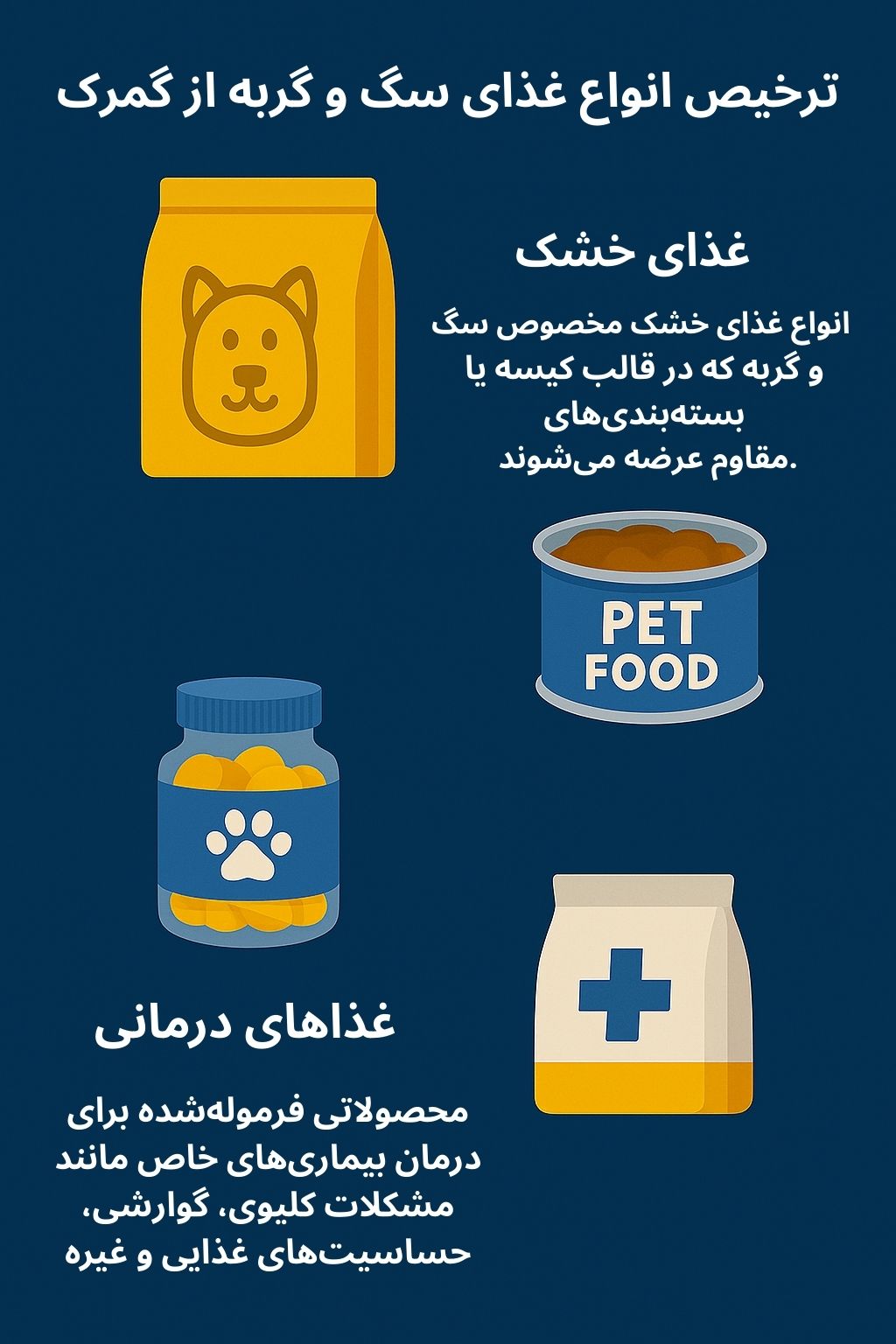Customs Clearance of Various Dog & Cat Foods
For estimating the time and cost of clearing dog and cat food, contact the experts at Saba Tarkhis.
Instant free consultation
Required Documents for Clearance
To clear dog and cat food from customs, a number of specific documents and permits are required, as these products are subject to strict sanitary controls.
Health & Sanitary Certificate from the Country of Origin:
This certificate is issued by the competent authorities in the producing country and shows that the product is sanitary, free from any microbial and chemical contamination, and compliant with the required standards.
Import Permit from Iran Veterinary Organization:
To import pet foods into Iran, the necessary permits must be obtained from the Iran Veterinary Organization. This permit ensures that the product, in terms of quality and safety, meets national and acceptable standards.
Product Analysis Sheet:
This sheet contains the exact composition of the product and shows the levels of nutrients and additives used in the dog and cat food. The manufacturer is obliged to provide this analysis to verify the product’s compliance with the required standards.
Commercial Invoice:
The invoice includes information on the price and purchase details of the product, which is necessary for calculating customs duties.
Packing List:
This list includes details such as the number of packages, weight, and type of packaging. It is used to reconcile the goods with the customs declaration.
Bill of Lading:
The bill of lading is issued by the carrier and provides complete information regarding the transportation of the goods from the country of origin to the destination.
Customs Declaration:
This declaration includes full specifications of the goods such as type, quantity, and value, which are essential for calculating customs duties and import taxes.
Certificate of Origin:
This certificate shows in which country the goods were produced and the origin of export. The certificate of origin plays an important role in determining preferential tariffs and applying trade agreements between countries.
Quarantine Permits (if required):
In certain cases, importing pet food requires obtaining quarantine permits to ensure the product enters the country free from contamination and sanitary risks.
Key Steps & Considerations in Clearing Dog & Cat Food
Clearing dog and cat food through Iranian customs is a complex, multi-stage process that requires strict adherence to customs rules, sanitary requirements, and international standards.
1. Obtaining Sanitary Permits from the Veterinary Organization
The first and most important step is to obtain sanitary permits from the Iran Veterinary Organization. These permits ensure that imported products are free from any contamination or harmful substances for pets and are compatible with their health. Importers must, prior to import, provide the necessary documentation and tests and obtain the relevant approvals. These permits should include health certificates from the country of origin demonstrating compliance with international standards in the production and packaging process.
2. Compliance with National & International Standards
After receiving sanitary permits, all imported products must comply with national and international nutritional and sanitary standards. These standards include food composition, percentages of nutrients, levels of protein, fat, vitamins, and minerals. The presence of any additives, preservatives, or artificial colors must also comply with set regulations. Adhering to these standards is essential not only to protect pet health but also legally mandatory for placing imported products on the domestic market.
3. Verification of Product Authenticity
Verification of product authenticity is another crucial stage. Importers must submit technical and sanitary documents to customs, including certificates of authenticity, ingredient compositions, microbiological test reports, and approvals related to packaging and labeling. The label must include precise information such as brand name, composition, usage instructions, and expiry date to help consumers make informed choices.
4. Customs Tariffs and HS Code
Customs tariffs for importing dog and cat food fall under HS Code 23091000. The HS Code is an international system for classifying goods used to determine customs tariffs and trade arrangements. Tariffs vary depending on the country of origin, product type, and import volumes. For example, products imported from countries with trade agreements with Iran may enjoy lower tariffs. Accurate knowledge of tariff rates and customs arrangements is essential for financial planning and managing import costs.
5. Compliance with Trade Laws & Regulations
Finally, importers must comply with all trade laws and regulations related to importing dog and cat food. These include tax rules, sanitary requirements, and specific regulations on imports from certain countries. For instance, some countries may impose stricter rules for importing animal products into Iran, which may include additional tests or special permits. Importers must also keep up to date with the latest changes in trade and customs laws to avoid legal or financial issues.

Special Conditions for Import & Export of Dog and Cat Food
Major Exporting Countries of Dog & Cat Food
Globally, the United States, Canada, France, Germany, and the United Kingdom are among the largest producers and exporters of dog and cat food. Leveraging advanced technologies, strict sanitary standards, and research focused on healthy and complete pet nutrition, these countries produce high-quality products. Well-known brands such as Nestlé Purina, Mars Petcare, and Hill's Pet Nutrition are among the major manufacturers in these countries, exporting a large share of their production worldwide.
Major Importing Countries of Dog & Cat Food
Among importing countries—besides Iran—Asian markets such as Japan and China and European countries like Spain, Italy, and Russia are major importers of dog and cat food. In these countries, growing public awareness about pet health and nutrition and the rapid rise in pet ownership have led to a sharp increase in demand for ready-to-use, high-quality pet foods. For instance, China, as the largest pet market in Asia, imports significant volumes of these products.
Import & Export Volumes of Dog & Cat Food to/from Iran
In recent years, the volume of dog and cat food imports into Iran has increased markedly. According to customs statistics, between 6000 and 8000 tons of dog and cat food are imported into Iran annually. This import volume reflects rising demand for advanced, high-quality products in the domestic market. The main exporting countries to Iran include Turkey, France, Germany, and occasionally China, offering their leading brands in Iran.
On the other hand, exports of dog and cat food from Iran are still at an early stage; however, the growth of domestic production and improved product quality have led some Iranian manufacturers to export their products to neighboring countries such as Iraq, Afghanistan, and the Republic of Azerbaijan. Export volumes are still limited, but over time—and with improved production levels and quality standards—they are expected to increase.
Global Turnover of Dog & Cat Food
The global dog and cat food market is a large and thriving industry. Its turnover in 2023 was estimated at about $120 billion, and it is expected to grow steadily in the coming years due to rising global demand and lifestyle changes. Leading producing and exporting countries hold a major share of this market.
Need the exact HS Code and the veterinary permit pathway? Our team manages your case end-to-end.
Request a pro forma invoiceFrequently Asked Questions
What is the HS Code for dog & cat food?
Pet food (dog and cat) is usually classified under 23091000; the final subheading depends on the composition and the form in which the product is presented.
What documents are required for clearance?
Health certificate from origin, Iran veterinary import permit, product analysis sheet, invoice, packing list, bill of lading, customs declaration, certificate of origin, and quarantine permits if needed.
Are tariff rates fixed or do they change?
Tariffs may vary depending on the country of origin, product type, and trade agreements. Staying updated with the latest enactments is essential for cost estimation.
What are the labeling and packaging information requirements?
Brand name, ingredients, usage instructions, and expiry date must be clearly shown on the label and comply with veterinary rules and national standards.
Saba Brokerage’s Specialized Services in Clearing Dog & Cat Food
With years of experience in clearing specialized goods including dog and cat foods our brokerage provides comprehensive, premium services to importers and exporters. Our services in this field include:
- Specialized consulting: We help you prepare and complete all required documents for clearance, including sanitary permits, standard certificates, and certificates of product authenticity.
- Customs follow-ups: Our team handles all your customs procedures from calculating and paying duties to completing clearance formalities and coordinating with relevant organizations.
- Financial & strategic planning: We provide financial and strategic advice to help you estimate costs, tariffs, and manage import-related risks.
- Logistics & warehousing: From transporting goods from entry points to managing warehousing and domestic distribution, our logistics services streamline your import process.
- Post-clearance support: We provide necessary post-clearance support, including resolving potential issues, legal follow-ups, and removing commercial obstacles supporting you every step of the way.
Back to list
.png)
